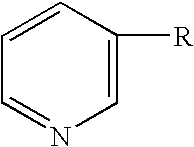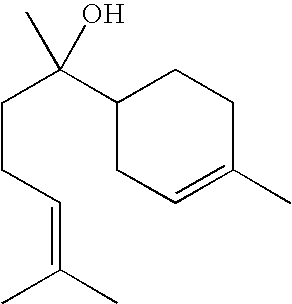Cosmetic or Dermopharmaceutical Composition Comprising at Least one Udp Glucuronosyl Transferase (Ugt) Enzymes Inducer
a technology of glucuronosyl transferase and composition, which is applied in the direction of biocide, plant growth regulator, plant ingredients, etc., can solve the problem that the stimulation of cutaneous enzymes has never been tested
- Summary
- Abstract
- Description
- Claims
- Application Information
AI Technical Summary
Benefits of technology
Problems solved by technology
Method used
Image
Examples
example 1
In Vitro Test
Description of the Presence of UGT in FHN and KHN
[0254]The cells are cultured in an appropriate medium in the absence (negative control) or in the presence of the test products or product solvent (solvent control). After the 3 days of culture necessary for enzyme induction, the cell layers are rinsed and the total RNA extracted using a commercially-available kit. The total quantity of RNA is determined by spectrophotometry (A260 / A280 ratio) and a cDNA bank is created by reverse transcription. Subsequently, the cDNA bank is exposed to specific primers for the gene tested for and real-time PCR(RT-PCR) is implemented. Parameters Ct and Tm are used.
[0255]Using that approach, it was possible to demonstrate the presence of mRNA coding for the UGT family in fibroblasts and keratinocytes, more specifically UGT1A1 and UGT1A6 for keratinocytes.
example 2
In Vitro Test
Induction of UGTactivity by Chrysin
[0256]Human hepG2 cells were cultured in an appropriate medium (Williams medium) in the presence or absence of the inductor, chrysin, for 3 days At the end of that period, cell lysis was induced, mRNA extracted and RT-PCR conducted
[0257]Quantification of UGT1A1 mRNA: The study was conducted after 3 days of incubation in the presence of chrysin. The values, shown in Table 1, obtained were normalized on the GADPH internal standard and then expressed as percentages relative to the reference.
UGT1A1UGT1A1 InductionReference100Chrysin3.9 μMNSNS7.8 μM247×2.511.8 μM 600×6
[0258]A very marked increase in mRNA was observed in the presence of chrysin with a very clear dose effect.
example 3
Test In Vitro
Anti-Inflammatory Action of Chrysin
[0259]Human keratinocytes and fibroblasts were cultured in an appropriate medium in the presence of various concentrations of chrysin for 24 hours. The cells were then transferred to a product-free medium and exposed to a pro-inflammatory dose of UVB radiation at a dosage of 35 mJ / cm2 for fibroblasts and 30 mJ / cm2 for keratinocytes. Following irradiation, the cells were then post-incubated either in medium alone or in medium containing various concentrations of chrysin vs. a positive control (acetylsalicylic acid) for 24 hours. PGE2 release into the culture medium after 24 hours was determined using an ELISA method.
Table 2 shows the change in PGE2 release post UVB irradiation
CHANGE IN PGE2 RELEASEPOST-UVB IRRADIATIONKERATINOCYTESFIBROBLASTESacetylsalicylic acid−92%−95%Chrysin 2 μM−75%−76%3.9 μM−84%−85%7.8 μM−85%−89%11.8 μM −86%−92%Significance (all concentrations): p
[0260]Chrysin exerts a marked effect as of the 2 μM concentration. T...
PUM
| Property | Measurement | Unit |
|---|---|---|
| average primary particle size | aaaaa | aaaaa |
| average primary particle size | aaaaa | aaaaa |
| average primary particle size | aaaaa | aaaaa |
Abstract
Description
Claims
Application Information
 Login to View More
Login to View More - R&D
- Intellectual Property
- Life Sciences
- Materials
- Tech Scout
- Unparalleled Data Quality
- Higher Quality Content
- 60% Fewer Hallucinations
Browse by: Latest US Patents, China's latest patents, Technical Efficacy Thesaurus, Application Domain, Technology Topic, Popular Technical Reports.
© 2025 PatSnap. All rights reserved.Legal|Privacy policy|Modern Slavery Act Transparency Statement|Sitemap|About US| Contact US: help@patsnap.com



